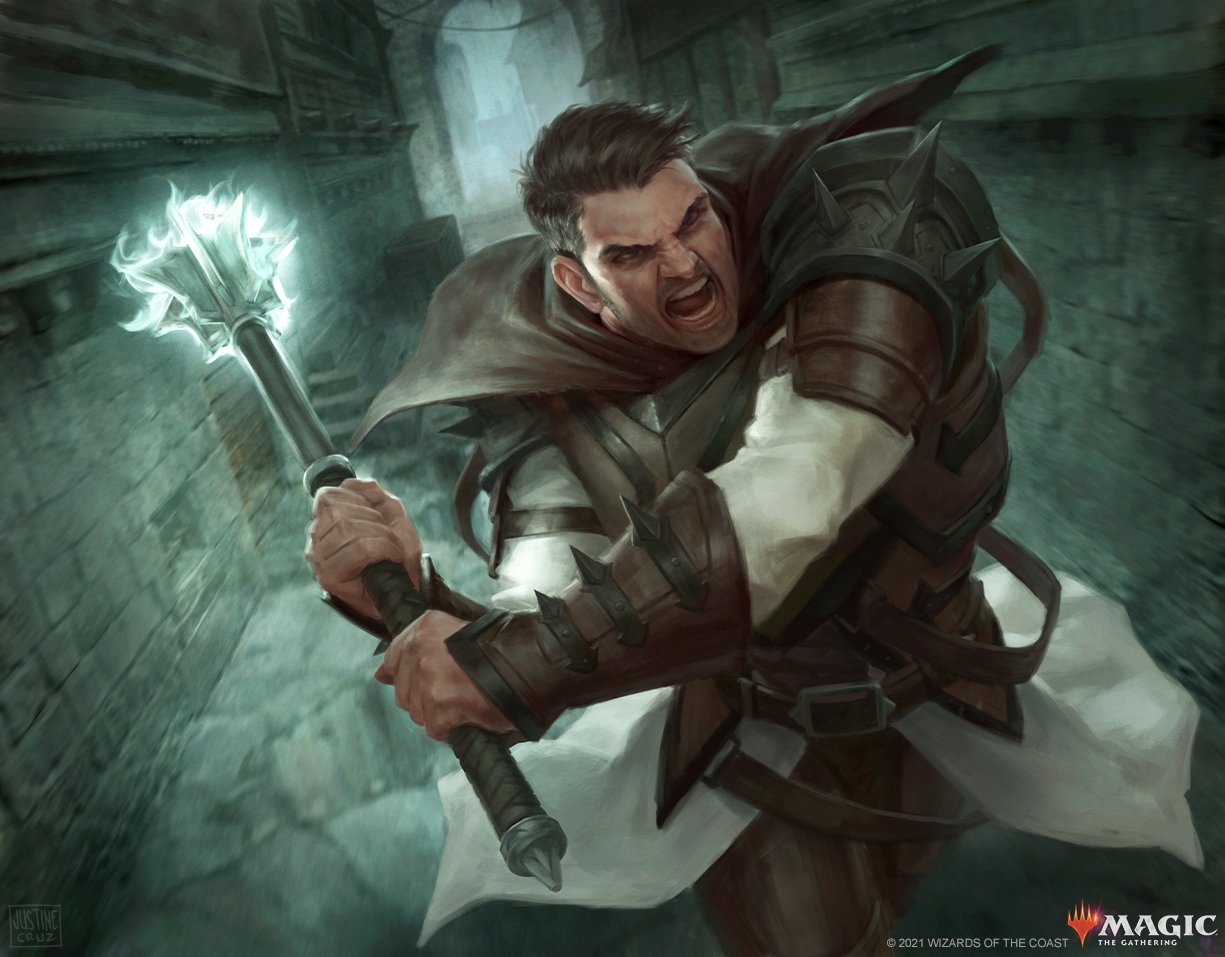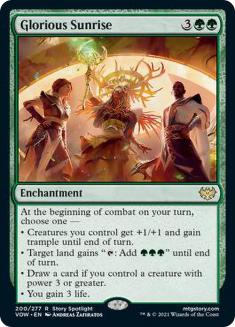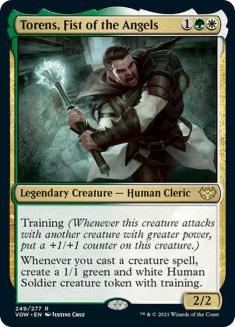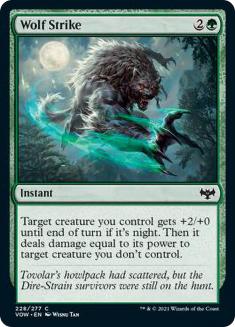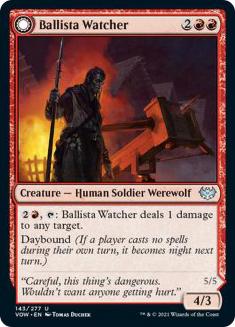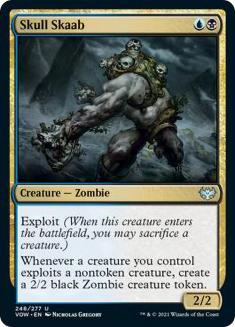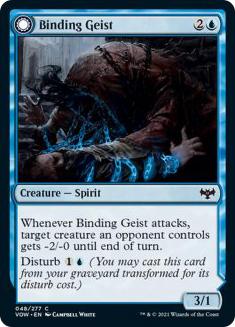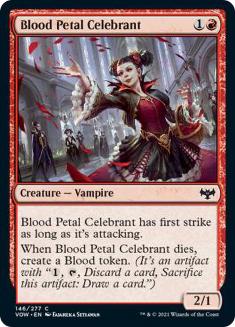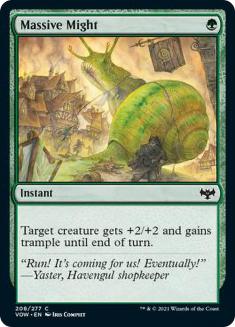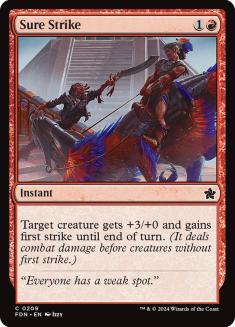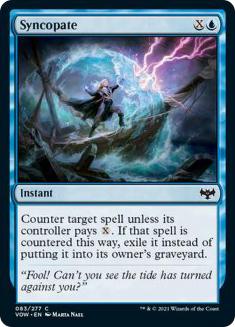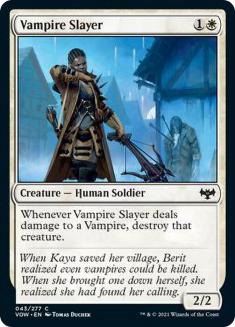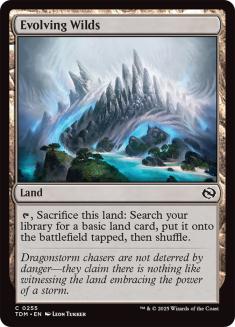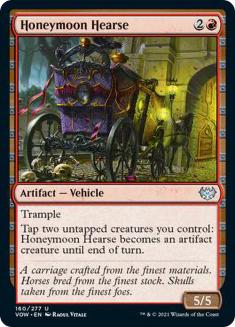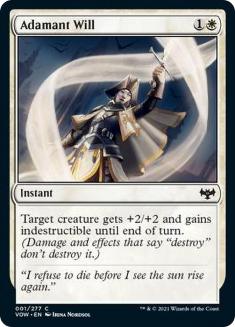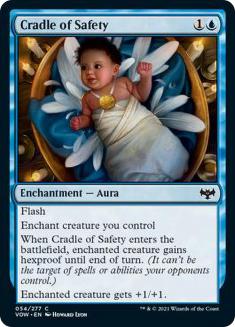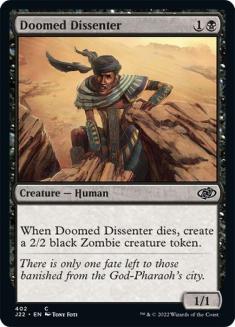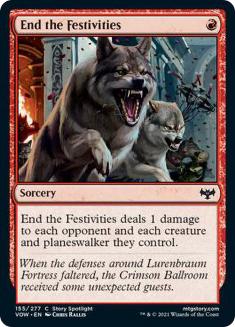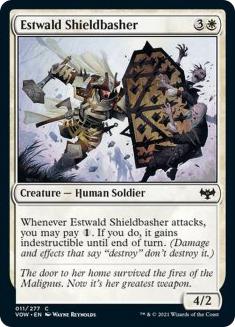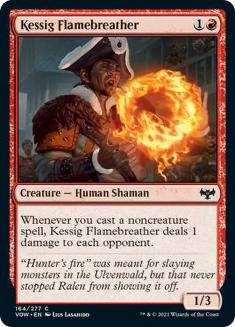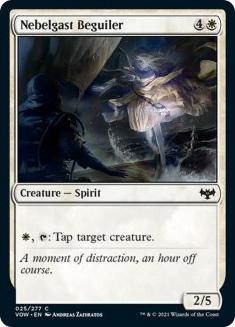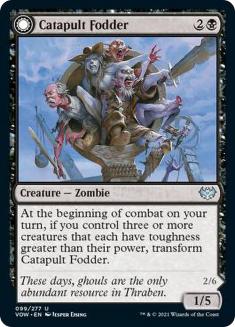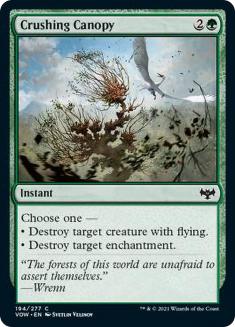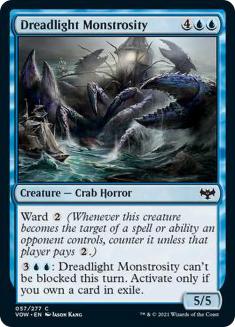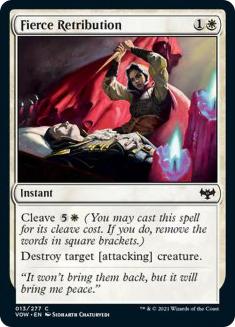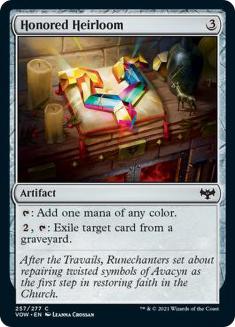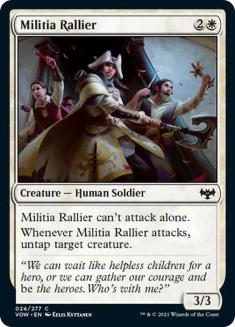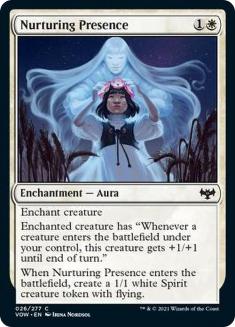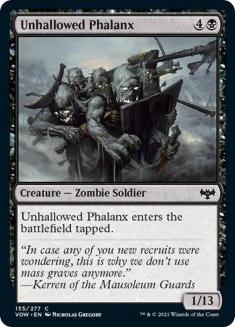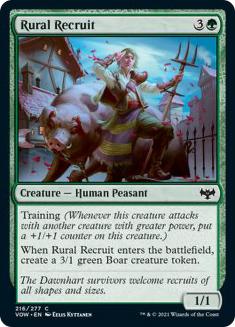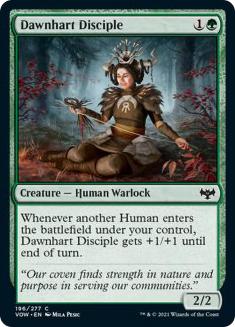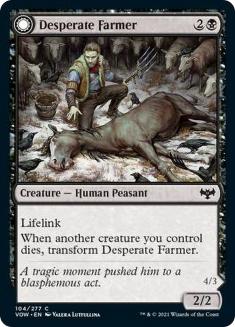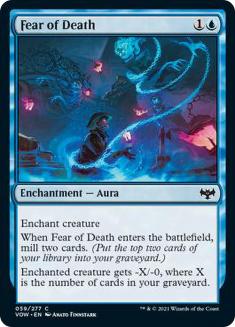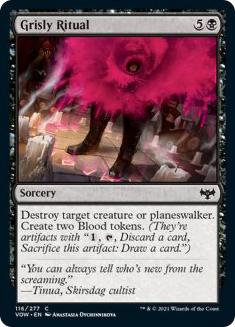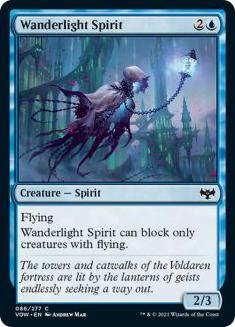The rares in Innistrad: Crimson Vow are all pretty fantastic, not that that’s a secret. Generally you hear all your favorite Limited content creators preaching, “Don’t marry your first pick. Stay open!”
Does that fall apart in a set with this many unbelievable rares? Yes, but also no . . .
You should first-pick rares in most drafts, and that pick should strongly bias you towards playing that card, but you shouldn’t completely force it. Let’s say you first-pick a fantastic black rare. It may be correct to take a reasonable, but not exceptional, black two-drop over an exceptional white two-drop. In many formats, most rares aren’t good enough to get me to pass exceptional cards early, but this format is. However, there’s an important strategy to follow that leads to maximizing the probability of playing your rare while still staying mostly open:
Stick to a single color.
In most Limited formats, there are two ways of staying open. The first is to try to stay monocolor until the table presents itself with a signal on which colors are the most open, and then pairing your current monocolor with that open color. The second is to take the most powerful card out of each pack regardless of color, and then eventually converge on pairing the powerful cards you have in what colors are open.
Both strategies are fine in the abstract, but staying monocolor is a more fruitful pursuit in Innistrad: Crimson Vow for two reasons. First, you’re maximizing the probability you play your first pick, which is likely a powerful rare. Second, you’re maximizing the probability you can play the rare you open at Pack 2, Pick 1.
So, when I say that the “Don’t marry your first pick. Stay open!” heuristic falls apart, but also doesn’t, what I mean is, “Stay open, but draft in a manner that maximizes the probability you get to play your first pick.” It’s a subtle difference, but an important one, and I promise it will lead you to have more powerful decks more often.
Below is a draft where I start with two bomb rares. Yes, I was passed a Glorious Sunrise at Pack 1, Pick 3. No, that shouldn’t happen, but here we are. Hence, given the strategy above, I really want to stay mono-green as long as possible. Ideally green gets paired with white in order to play Torens, Fist of the Angels, but that card is also pretty easy to splash in any green deck. The question is, “At what junction in the draft should I take a non-green card?”
Pack 1, Pick 4
The Picks So Far:
The Pack:
The Pick:
This pick is a prime example of the types of difficult decisions that come up in this format, and how it’s often correct to navigate differently due to the power level of the rares in my pool. In most Limited formats, my pool would have cards that are much less powerful, and it would be correct to take Ballista Watcher. Watcher has blown me away so far. I started pretty low on the card, but the back side is almost a bomb, and the front side is quite solid too. However, it’s still not good enough to push me off this green. That’s how strongly I believe that following the strategy I present at the beginning of this article is the best way to succeed in this format.
Wolf Strike is the best green common, and a solid removal spell, but Evolving Wilds gives it a run for its money. Green is quite good at splashing in this format. Green has both a common and an uncommon mana creature that produces mana of any color. Add Evolving Wilds to that mix, and you can throw rares from Pack 2 and Pack 3 in your deck pretty easily. It’s not that the decks actively want to splash around and durdle; it’s that the cards in this format are so powerful that you’re often rewarded for speculating on Evolving Wilds.
I think this pick is closer than a lot of people would give credit, but I landed on Wolf Strike. A nice tie-breaker here is that, with an aggressively slanted Selesnya rare, a lean Selesnya deck is a potential path and that deck isn’t as interested in splashing (although it still will for a bomb rare).
Pack 1, Pick 5
The Picks So Far:
The Pack:
The Pick:
Another Ballista Watcher, but this time paired with cards that are much worse than Evolving Wilds and Wolf Strike.
Adamant Will and Estwald Shieldbasher are solid filler cards for Selesnya, but nowhere close to the threshold of non-green cards to consider here. Yes, with the current pool, Selesnya is a more ideal option than Gruul, but not by so much that it’s correct to take a filler card. And regardless, that would make Sporeback Wolf the pick anyway. The Wolf is a two-drop, which is more important than either of the white cards, and it keeps me open as mono-green to boot.
But is Sporeback Wolf good enough to deter me from taking Ballista Watcher here? No. Sporeback Wolf is a fine two-drop, but it’s rarely premium in any deck. Maybe if you’re lucky enough to draft the Golgari toughness-matters deck, but that deck doesn’t exist at every table because all the payoffs are uncommon, and you need multiples. Hence, I believe the correct pick is Ballista Watcher.
Pack 1, Pick 6
The Picks So Far:
The Pack:
The Pick:
Is Catapult Fodder the direction to go in? If I’m being honest, if I took Sporeback Wolf in the last pack, I would take Catapult Fodder here. However, my current pool doesn’t have any reason to go for Golgari toughness-matters over any other green archetype, and it has a stronger pull towards Selesnya and Gruul by a reasonable margin. Fodder is fun, but it isn’t correct to take here.
Fierce Retribution is a solid removal spell, but it’s not premium. Now, removal is extremely important to have access to in this format because of how many rares require an immediate answer. Without Ballista Watcher and two copies of Wolf Strike, this pick would probably be Fierce Retribution. I could lock into Selesnya and take the removal spell. However, the correct pick is Evolving Wilds for a few reasons:
- If I end up Gruul, I’ll want to splash Torens.
- I already have two copies of Wolf Strike, which makes removal less premium, although it’s still quite important.
- Fierce Retribution pushes me towards Selesnya, which is an aggressive deck. Given that Retribution cannot remove blockers until you can pay the cleave cost, Selesnya is one of the worst homes for it. I’ll note it’s still a solid playable in Selesnya, but it’s not the strong pull to white you might think it is when I’m guaranteed to be green.
The next pick poses a similar question, but with a two-drop instead of an Evolving Wilds.
Pack 1, Pick 8
The Picks So Far:
The Pack:
The Pick:
Remember above when I chose to take Ballista Watcher over Sporeback Wolf? Well, I would probably take Fierce Retribution over Sporeback Wolf here too. There’s a really fine line between card quality and the desire to stay monocolored, and learning that line is proving to be one of the most important things in order to succeed in Innistrad: Crimson Vow Limited. I believe Sporeback Wolf does not cross that line, but Dawnhart Disciple does.
Almost every creature in Selesnya is a Human, and the same goes for Gruul as long as it’s day because daybound creatures are Humans until they transform. Attacking as a 3/3 is worth a lot more than attacking as a 2/4, especially in a world where training is a mechanic.
Dawnhart Disciple isn’t as important as Evolving Wilds, but I still think staying monocolored is worth more than taking this Fierce Retribution. And let me tell you, this decision paid off. Blue was the clear open color. The next pick I took another green card, and Pack 1, Pick 10 presented me with Vilespawn Spider. Thanks to my Evolving Wilds pick, I was able to pivot into Simic while still playing Torens, Fist of the Angels. The end of Pack 1 even gave me Scattered Thoughts and Binding Geist to cement my understanding that blue would flow. This then further rewarded me in Pack 3 by getting passed Mirrorhall Mimic, another bomb rare!
As you can see, my strategy of staying open in a manner that maximized the probability I could play the rares I took at the beginning of Pack 1 is the reason I ended up with a deck with extremely high card quality. Without the strategy I outline at the beginning of this article, I think most people end up with a significantly worse deck in this seat. You can see the deck and draft log below:

